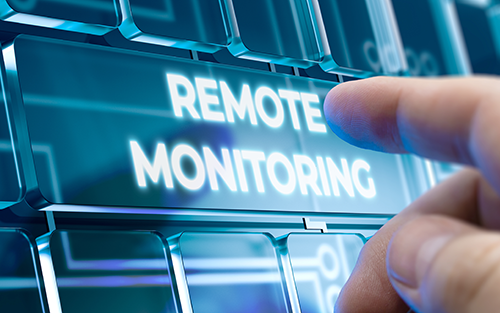- By Guy Yehiav
- November 07, 2024
- InTech Magazine
- Opinion
Summary
The careful integration and management of IoT devices helps manufacturers handle the complexity of their supply chains.

Several asset monitoring and inventory management challenges impact an enterprise’s supply chain efficiency. Collecting real-time data on asset location and condition on a consistent basis is difficult without the proper technology infrastructure in place. Without timely guidance and accurate intelligence, informed decision-making for successful supply chain operations is almost impossible. Optimizing asset and inventory management is crucial for reducing errors in inventory levels and avoiding out-of-stock and overstock situations.
Scalability issues pose another common challenge. As inventories spanning multiple locations, countries and continents become larger and more globalized, the technology platforms used to manage the value chain must scale accordingly. Unsurprisingly, research from SAP found that 52% of business leaders believe their supply chain needs improvement. To overcome asset and inventory challenges and bolster supply chains, companies must leverage advanced technologies and best security practices including the internet of things (IoT), integrated workflows and real-time prescriptive analytics powered by artificial intelligence (AI) and machine learning (ML).
Producing real-time intelligence
Enterprises optimize their asset and inventory management by strategically deploying IoT-powered devices, sensors and cameras throughout their supply chain which enables remote and automated monitoring of various asset conditions in real time. In previous generations of IoT, supply chain managers would then analyze the data collected from their IoT deployments to laboriously uncover actionable insights. However, now with the use of AI-driven analysis and leveraging of ML models, organizations are unlocking trends and patterns in inventory usage that automagically enhance demand forecasting accuracy, reduce excess stock and minimize out-of-stocks.
IoT sensing capabilities collect critical data on the location and condition of an asset during transportation and storage while reporting other variables such as light, impact, temperature, humidity, vibration, etc. If an asset isn’t where it’s supposed to be or if any of these defined parameters exceed or dip below established thresholds, the IoT system will automatically notify the pre-determined employee at the precise time, empowering them to respond quickly with corrective action before an issue results in inventory loss.
For example, an edge-to-cloud IoT solution using fever tags for cattle monitoring tracks the health of thousands of individual cattle which helps ranchers to identify, isolate and treat sick cows before they infect the herd. Another example is having condition-sensitive food or medication products being shipped across the country. IoT tags equipped with multiple sensing capabilities are now able to empower retailers to combat theft and intervene if refrigeration equipment fails along the route.
The growing popularity of IoT adoption demonstrates that businesses recognize its critical role in optimizing asset and inventory management. In fact, the global market worth of IoT in Supply Chain Management (SCM) will reach $41.8 billion by 2033. The real challenge is therefore not deciding to use IoT but figuring out how to effectively integrate these IoT devices, sensors and cameras with existing asset and inventory management systems at scale.
For an enterprise to build a sophisticated IoT solution on its own would require robust network infrastructure and advanced console servers that follow evolving standard communication protocols. Integration with existing IT infrastructure, enterprise resource planning and inventory management systems is also a heady task without the proper expertise and commitment to ongoing support. Thankfully, there are flexible IoT solutions that remove the burden from the enterprise as they deploy at scale.
Best IoT security practices
To take advantage of the incredible value of IoT technologies, protection against cyber-attacks is paramount as companies minimize vulnerabilities and safeguard overall network infrastructure and data. IoT security best practices include:
- Implementing secure access controls, such as role-based access control and multi-factor authentication.
- Using proper encryption to protect data during transit and at rest.
- Disabling unused services and changing default settings, i.e., updating default passwords, usernames and configurations.
- Segmenting networks to separate edge IoT devices from critical internal networks; in the event of a breach, network segmentation will limit the blast radius.
- Leveraging cellular technology instead of Wi-Fi for connectivity whenever possible.
- Educating employees on best practices and suspicious links/phishing emails to promote security across the supply chain.
- Performing regular firmware patches and security updates that allow IoT devices to remain secure over their lifecycle.
Regular security practices like these are only possible with integrated solutions that support remote access and management to all deployed IoT hardware.
This column originally appeared in the October 2024 issue of InTech digital magazine.
About The Author
Guy Yehiav is president of SmartSense by Digi. SmartSense was created to use the power of the Internet of Things to help protect the assets most critical to their customers. Over his 25-year career, Yehiav has built world-class technology companies and prior to SmartSense by Digi, he served as general manager and vice president of Zebra Technologies’ Zebra Analytics business unit.
Did you enjoy this great article?
Check out our free e-newsletters to read more great articles..
Subscribe